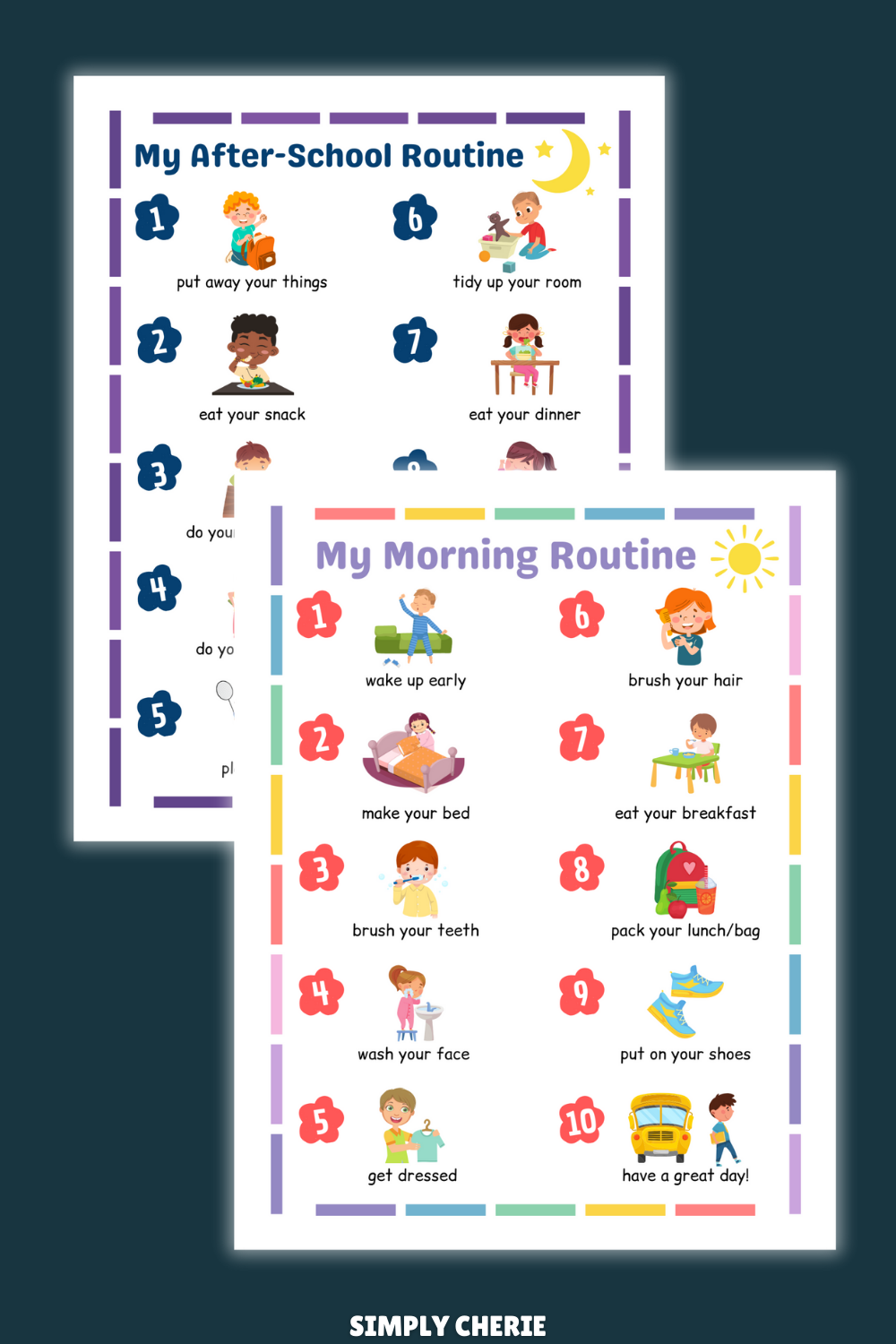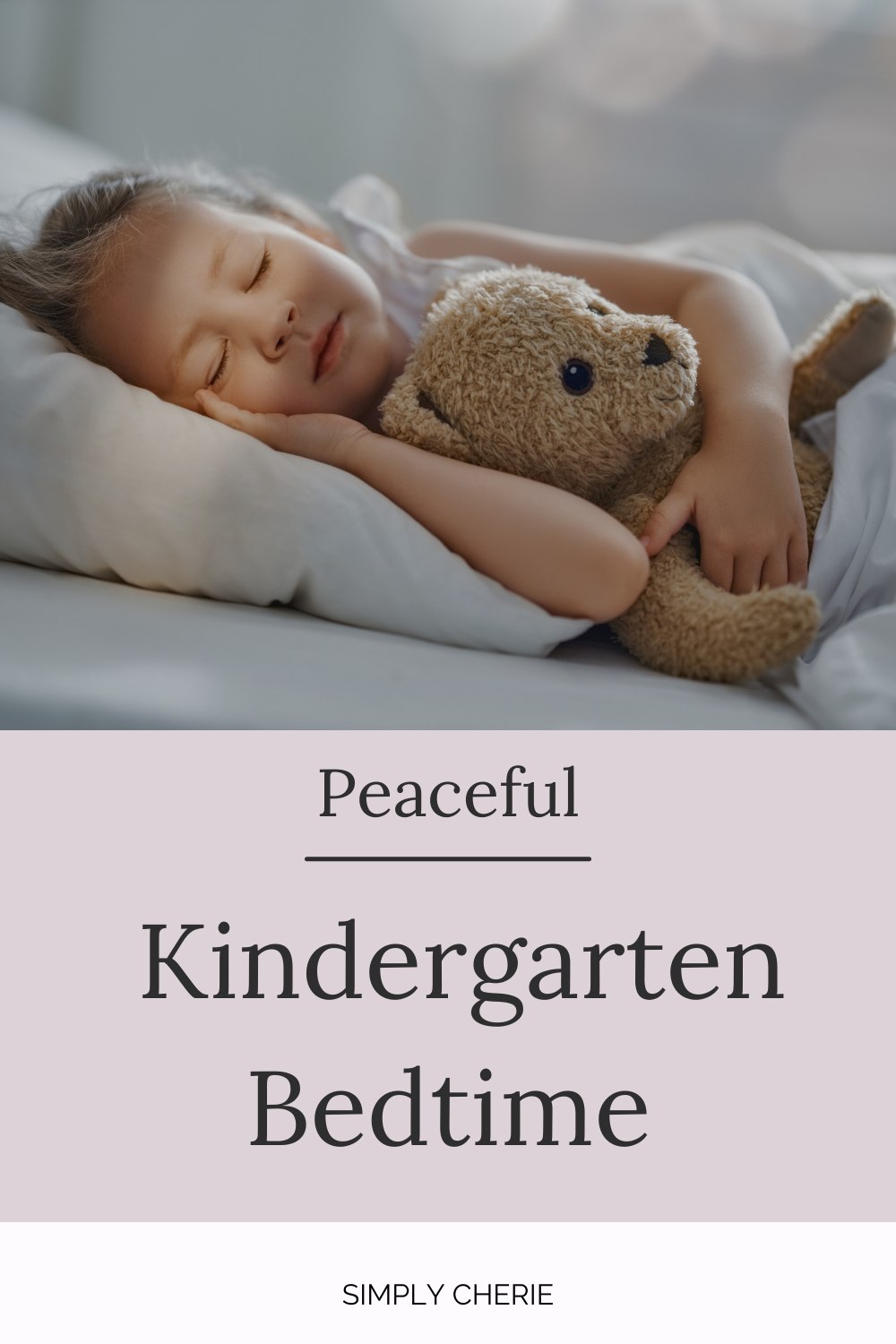If you’ve got a kindergartner, you already know bedtime can make or break the next morning. At this age, kids are learning independence, but they still need a lot of structure. A good bedtime routine helps them feel secure, sleep better, and wake up ready to learn.
I still remember walking my daughter to school on her very first day of kindergarten. We stopped at the classroom door, and I said goodbye while holding back my own tears. That season of life is so special — but also full of transitions. Having a predictable bedtime routine made the mornings easier and gave us both the peace we needed.
Here are 10 bedtime routine tips that work especially well for kindergartners:
1. Keep a Consistent Bedtime

Children thrive on predictability, and kindergartners are no exception. Choosing a regular bedtime sets their internal clock so they naturally get sleepy around the same time each night. Even on weekends, keep bedtime and wake-up time within 30 minutes of the weekday schedule. Consistency is key to smoother mornings. Over time, their bodies will start to recognize the bedtime rhythm, making the whole process less of a battle. And let’s be honest — when your child sleeps well, everyone in the household benefits.
2. Start a Wind-Down Window
Instead of jumping straight from playtime into bed, give your child a calm transition. A 30–45 minute “wind-down window” works wonders. Think about including a warm bath, soft music, or coloring as part of this quiet time. The goal is to signal, “It’s almost time for sleep.” Kids this age need help slowing down their busy bodies and minds. When you make wind-down time consistent, your child starts to associate these activities with rest, which helps bedtime go more smoothly.
3. Limit Screen Time Before Bed
Screens overstimulate little brains and delay sleep. Blue light also interferes with melatonin, the hormone that regulates rest. Aim to turn off screens at least one hour before bedtime and replace them with puzzles, story time, or gentle play. You’ll notice evenings feel calmer and bedtime comes easier. Setting this boundary might feel tough at first, but it pays off quickly when your child falls asleep faster. And once it becomes the norm, you won’t have to battle over screens every night.
4. Set Out Tomorrow’s Clothes

One of the simplest ways to avoid morning chaos is to prepare the night before. Encourage your child to choose their outfit — it gives them independence and responsibility. This also prevents last-minute arguments when you’re trying to get out the door. A two-minute step at night saves stress in the morning. Kindergartners also enjoy the feeling of being “big kids” when they can make choices about their clothes. You’ll be surprised how this little habit adds peace to both evenings and mornings.
5. Create a Snack-and-Sip Routine
Bedtime hunger is real, especially for energetic kids. Offer a small, healthy snack like fruit, yogurt, or granola with a sip of water. This keeps them satisfied through the night and less likely to call you back into the room. Make it part of the routine, not a stall tactic. Just be careful to avoid sugary foods or drinks, which can spike energy at the worst time. Once you make this a predictable step, your child will stop asking for snacks after the lights go out.
6. Use a Visual Bedtime Chart

Kindergartners love visuals and do best when they know exactly what comes next. A chart with steps like “bath, pajamas, brush teeth, story, prayers” gives them structure and independence. Many kids enjoy checking things off or moving a marker as they complete each step.
💡 When my kids were little, I created simple charts just like this — and it made bedtime so much smoother. That’s why I designed the Morning + After-School Routine Printable, which also includes a bedtime page. It’s colorful, kid-friendly, and easy for kindergartners to follow. Having a chart takes the pressure off you as the parent because the routine becomes “the rule,” not a nightly debate.
👉🏼 You can grab it here and start using it tonight.
7. Read Together Every Night
Reading aloud is one of the best ways to end the day. It builds language skills, sparks imagination, and creates bonding time. Even 10–15 minutes makes a big difference. Bedtime stories are memories your child will carry forever. For kindergartners, picture books with rhythm and repetition are perfect, but you can also begin introducing short chapter books. This step not only calms your child but also builds a love for books that will last a lifetime.
8. Build in Choices
Kindergartners often push back because they’re testing independence. Offer small, controlled choices like “these pajamas or those pajamas” or “this book or that book.” Two options are enough to give them control without overwhelming them. Choices reduce power struggles and keep the routine moving. Over time, this helps them feel like bedtime is something they’re a part of — not something that’s happening to them. And when kids feel ownership, they’re more likely to cooperate.
9. Keep Comfort Items Handy

Nighttime worries are common at this age. A stuffed animal, blanket, or nightlight can help them feel safe and secure. These comfort items also make middle-of-the-night wakeups easier to handle. Letting your child choose their comfort item makes it even more special. Over time, these objects become signals of safety and rest. Having them nearby reduces anxiety and gives your child something familiar to hold onto.
10. End With Connection
Bedtime is the perfect chance to close the day with love. Snuggle, pray together, or share “highs and lows” from the day. These little rituals help kids settle emotionally. Connection is the last step before a peaceful night’s sleep. Even just a few minutes of undivided attention reassures your child that they are safe, loved, and ready to rest. It’s a beautiful way to end the day on a positive note.
Final Thoughts
Bedtime doesn’t have to feel like a nightly battle. With a routine your kindergartner can count on, evenings become calmer and mornings start on the right foot.
I often think back to that first day of kindergarten with my daughter — the tiny backpack, the nervous smile, the lump in my throat as I waved goodbye. Those little years go by so quickly, but the habits we build during them last much longer. A strong bedtime routine not only helps your child rest well now, it sets the stage for healthy sleep habits for years to come. And just as important, it gives you both those sweet end-of-day moments of connection that you’ll treasure long after kindergarten is over.
👉🏼 Don’t forget to grab your copy of the Morning + After-School Routine Printable so you can make your child’s bedtime routine clear, fun, and stress-free.
You may also enjoy:
- Top 10 Bedtime Essentials Every Kindergartener Needs
- 10 Best Bedtime Books for Kindergarteners (Age 5–6)
This post may contain affiliate links, which means I may earn a commission if you purchase through them (at no extra cost to you!) Portions of this content may be generated by AI.



Comments ()